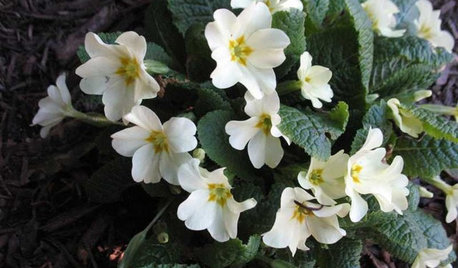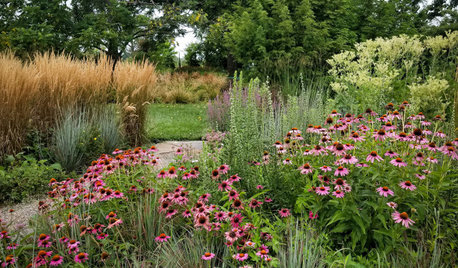Eye Popping Holly Hock Cross
Aunti_Hedda
19 years ago
Related Stories

TASTEMAKERSTake a Behind-the-Scenes Tour of Netflix’s ‘Grace and Frankie’
Set decorator Beauchamp Fontaine explains the design decisions behind the home sets featured in the new Netflix series
Full Story
DESIGNER SHOWCASESLivable Luxury at the 2015 Pasadena Showcase House of Design
Southern California designers mostly forgo the glitz at this year’s show house — a Tudor-Craftsman mansion and carriage house
Full Story
HOUZZ TOURSMy Houzz: Cozy and Crocheted in the Netherlands
A creative blogger's inviting apartment is knit together with DIY and vintage touches
Full Story
FALL GARDENINGHouzz Call: Show Us Your Fall Color!
Post pictures of your fall landscape — plants, leaves, wildlife — in the Comments section. Your photo could appear in an upcoming article
Full Story
LIGHTINGHouse Hunting? Look Carefully at the Light
Consider windows, skylights and the sun in any potential home, lest you end up facing down the dark
Full Story
SPRING GARDENING7 Great Container Plants for Early-Spring Appeal
Good things sometimes come to those who impatiently head to the nursery for plants that can take a chill
Full Story
HOLIDAYSHouzz Call: Show Us Your Holiday Mantel
Do reindeer prance or lights dance above your fireplace during the holidays? Share your decorated mantel with us
Full Story
GRAYChoosing Paint: How To Pick the Right Gray
Which Version of Today's 'It' Neutral Is For You?
Full Story
HOUZZ TOURSMy Houzz: Soothing Neutrals Calm in an Airy Netherlands Home
This perfectly pale interior exudes tranquility and holiday charm with subtle touches of nature
Full Story
FALL GARDENING20 Favorite Flowers for the Fall Landscape
Vivid blooms and striking shapes make these annuals and perennials a delight in autumn gardens
Full Story





jnette
Aunti_HeddaOriginal Author
Related Professionals
Maple Valley Landscape Architects & Landscape Designers · Allentown Landscape Contractors · Hicksville Landscape Contractors · Holtsville Landscape Contractors · Lees Summit Landscape Contractors · Wailuku Landscape Contractors · Waterford Landscape Contractors · York Landscape Contractors · Carlsbad Carpenters · River Forest Carpenters · Alexandria Fence Contractors · Oxnard Fence Contractors · Saint Louis Park Fence Contractors · Shorewood Fence Contractors · Winnetka Fence ContractorsWalter_Pickett
maineman
Aunti_HeddaOriginal Author
FrozeBudd_z3/4
teachtalk
Aunti_HeddaOriginal Author
teachtalk
keking
jim127
ponderinstuff
swilly53